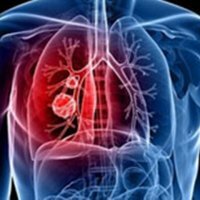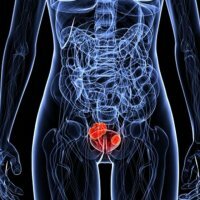Stomach cancer: symptoms, diagnosis, treatment and prevention
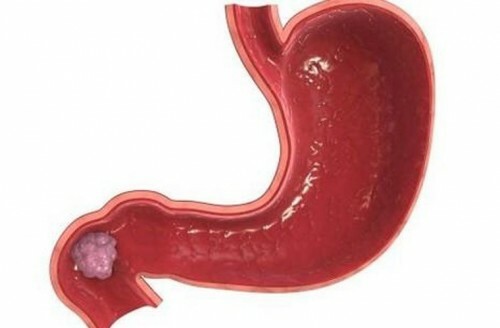
Gastric cancer is the degeneration of epithelial cells from healthy to malignant.The disease is considered quite common, is more often diagnosed in people aged 50-70 years.According to statistics, men get stomach cancer 20% more often than women.
Table of contents:Classification of pathology
This disease is divided into several species, depending on the causes of its occurrence, pathways and localization.
Ring-cell carcinoma of the stomach
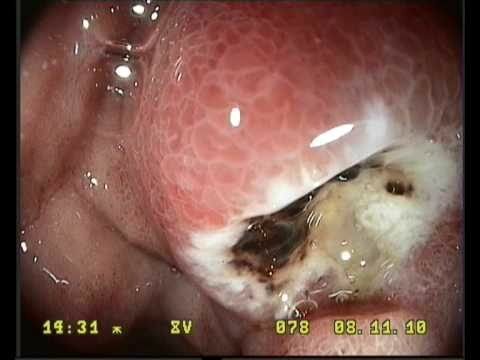
This type of pathology refers to a variety of diffuse cancers, diagnosed usually by histological examination.A distinctive feature of the transstoid-cell carcinoma of the stomach is its aggressive course.
As a result of the studies, it was accurately established that the type of gastric cancer in question has a hormonal dependence - testosterone( in men) and estrogens( in women) in increased quantities were found in malignant cells.
Features:
- is more commonly diagnosed in women;
- peak incidence falls on 40-50 and 60-70 years.In other age intervals, ring-shaped gastric cancer is very rarely diagnosed;
- no connection was found between the onset of the pathological process and bad habits( alcohol use, smoking, eating disorders);
- detection of the type of stomach cancer in question is more often recorded in urban residents.
Infiltrative stomach cancer
This is a morphological carcinoma that does not have definite limits of growth.A distinctive feature of infiltrative gastric cancer - the tumor grows into the thickness of the body wall.
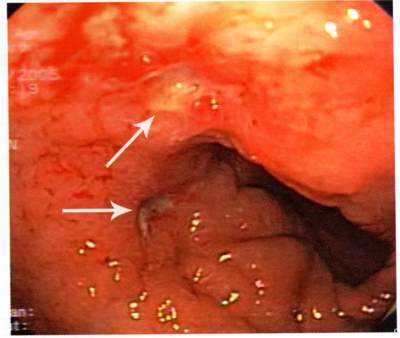
Features:
- can also be diagnosed in young people;
- clearly traces the hereditary factor;
- foci of progressive malignant cells are located "heapwise" - at a distance from each other no more than 7 cm;
- this type of cancer is the most malignant;
- formation of metastasis is unavoidable;
- clinical picture always begins with the symptoms of a dyspeptic disorder;
- at the last stages of swelling by a doctor is defined as a stone-like formation of a very dense structure.
Low-grade gastric cancer
This type of considered disease is a form of adenocarcinoma of the stomach, which consists of table cells.
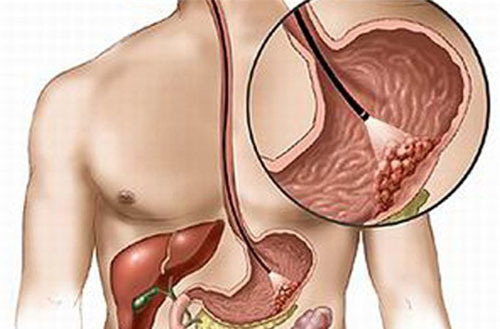
Features:
- the growth rate of malignant cells is very high;
- around the tumor always develop necrotic and inflammatory foci;
- clear boundaries of the tumor are absent;
- The growth of malignant cells occurs according to the principle of impregnation of the stomach tissue;
- formed metastases in regional lymph nodes and distant organs.
Note: low-grade gastric cancer is characterized by the indispensable formation of a large number of metastases, moreover, at a high rate.
Causes of stomach cancer development
The transformation of healthy cells into malignant cells is not a one-stage process.Everything happens in stages.
The first stage of
There are mutations that are caused by exposure to external or internal carcinogens.
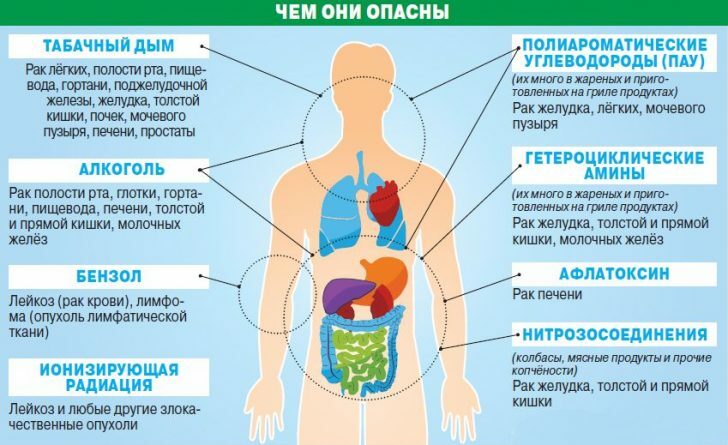
External carcinogens include:
- regular use in large quantities of various food additives of chemical origin, abuse of alcoholic beverages, smoking, long-term use of certain medications;
- insufficient amount in the body of vitamin C.
By definition, internal carcinogens in medicine are usually assumed to be infectious, immune and hereditary factors.
The second stage
The development of diseases that precede the cancer begins:
- gastritis with a decreased and increased acidity of a chronic nature;
- Benign neoplasms on the walls of the stomach( polyps);
- stomach ulcer;
- dysplasia of the walls of the stomach;
- metaplasia of the walls of the stomach.
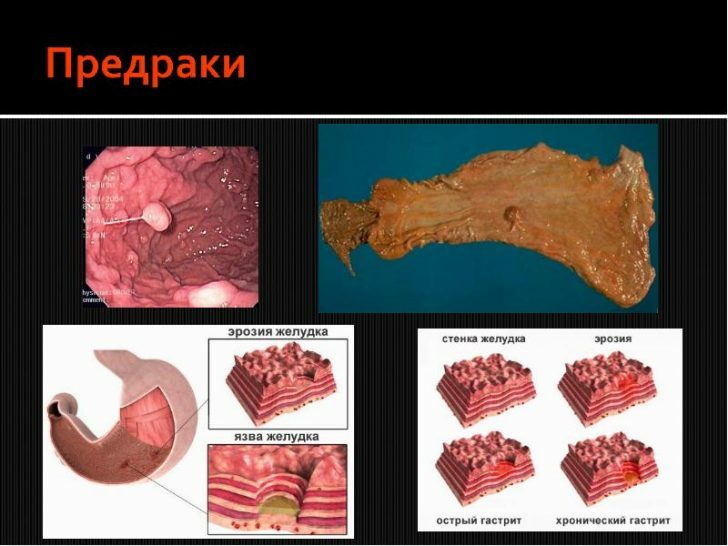
Note: the above diseases can develop and proceed without the involvement of carcinogens.In this case, doctors give an absolutely favorable prognosis.If carcinogens are present and have a negative effect, then these pathologies can be transformed into gastric cancer.
Third stage
Carcinogenesis is developing in combination of the two above-described factors.There are deep pathological processes that are not fully understood by modern medicine and science.But it is known that the development of stomach cancer is promoted by bacterial infection, damage to the gastric mucosa and the mandatory presence of carcinogens.
Stage of development of stomach cancer
There are 4 stages of development of the disease in question - they all have distinctive characteristics and are designated by a certain code.
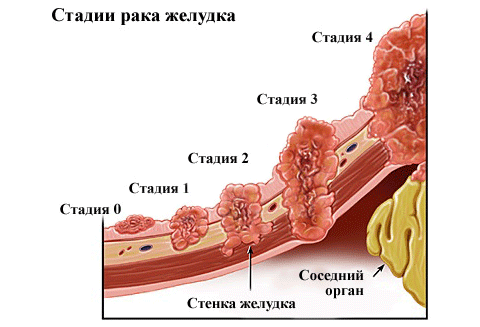
First stage
It is considered in three versions:
- Stage 1A - a primary tumor, there is germination in the mucous and submucous layer of the stomach wall, there are no metastases.
- Stage 1B, variant 1 - the tumor grows into the mucous and submucosa layers, there are metastases in 1-6 regional lymph nodes, there are no distant metastases.
- Stage 1B, variant 2 - the tumor grows into the subsonic and muscular layers, there are no lesions of the regional nodes, there is no distant metastasis.
The second stage of
At this stage of development, progression of the malignant tumor is noted. Doctors distinguish also three variants of development:
T1 N2 M0 - the tumor grows only in the mucous and submucosal layer, up to 15 lymph nodes are involved in the pathological process, there are no distant metastases.
T2ab N1 M0 is a primary tumor with localization in the muscular and subsaurosis layer, distant metastases are absent, but 1-6 regional lymph nodes are involved in the pathological process.
T3 N0 M0 - the tumor is localized in the visceral wall and serosa, adjacent organs are unaffected, there are no metastases.
Third stage
This stage of development of the considered disease can be encrypted in 4 variants.Namely:
- Stage 3A, variant 1 - the muscular and subserous layer of the stomach wall is involved in the pathological process, distant metastases are absent, but there are cancers in 7-15 lymph nodes.
- Stage 3A, variant 2 - all layers of the body's serous membrane are affected, while adjacent organs are healthy, distant metastases are absent, only 1-6 regional lymph nodes are affected.
- Stage 3A, variant 3 - malignant cells are found on neighboring organs, but there are no distant metastases and lesions of the lymph nodes.
- Stage 3B - adjacent organs are involved in a malignant lesion, metastases( distant and near) are absent.
Fourth stage
This stage is considered to be the most dangerous for a patient's life, since the malignant tumor is spread too widely. Doctors encrypt the stage in 3 versions:
T4 N2 N3 M0 - the tumor is distributed to neighboring organs, almost all regional lymph nodes are affected, distant metastasis is absent.
T1 T2 T3 N3 M0 - affected muscular, mucous, submucosal, under-serous, and in some cases, the entire serous membrane.In this case, distant metastases are absent, but 15 or more regional lymph nodes are affected.
Tlubaya Nlybaya M1 - marked all the variants of lymph nodes, the tumor grows maximally, there are distant metastases.
Inoperable stomach cancer
This stage of development of the disease under consideration is always described and considered a separate item.With such a development of the disease, it is impractical, and sometimes impossible, to perform surgical treatment of part of the stomach and lymph nodes.
Inoperable cancer is considered in two versions:
- is locally distributed - a significant part of the stomach is already damaged by a malignant tumor, metastases affect vital organs( eg, vessels, nerve plexuses);
- metastatic - malignant cells spread through the bloodstream, metastases are affected by distant organs.
The main ways of metastasizing malignant cells are lymphatic, so secondary tumors are always found primarily in the lymph nodes. Classification of metastases:
- in the navel area - sisters Marie Joseph;
- area of the ovaries - Crookkenberg;
- in the rectal area - Schnitzler;
- of the left supraclavicular area - Virchowa.
Symptoms of stomach cancer
 Distinctive characteristic of the considered disease is a long atypical manifestation of the disease.Often patients report complaints that indicate the development of completely different pathologies. First signs of stomach cancer:
Distinctive characteristic of the considered disease is a long atypical manifestation of the disease.Often patients report complaints that indicate the development of completely different pathologies. First signs of stomach cancer:
- retrosternal pain in the localization of a malignant neoplasm in the upper part of the stomach - their doctors are mistaken for the symptoms of angina pectoris;
- pain in the stomach, hungry / nocturnal pain, heartburn - doctors mistakenly diagnose gastritis or peptic ulcer of the stomach / duodenum.
A misdiagnosed diagnosis can hide a true pathology for a long time.This is dangerous for human life - cancer in general, and especially aggressive carcinomas, can develop rapidly.The doctor should pay attention to the presence of diseases of the gastrointestinal tract of a chronic nature in the patient's anamnesis.To caution a specialist may be a long absence of the effect of recovery, even with a full treatment.
In general, the symptoms of stomach cancer are diverse and may be present in some combinations:
- unpleasant sensations in the abdomen of a constant nature - the patient complains of a feeling of overcrowding and bursting even after taking small amounts of food;
- ingestion of food is difficult, pain in eating is localized in the chest, irradiation in the back;
- pain syndrome, which occurs after eating, is not removed even after taking pain medications;
- permanent weakness and increased fatigue even with low physical activity;
- decreased appetite;
- abrupt weight loss - for 6 months is lost to 20 kg with an initial weight of 80 kg;
- is completely saturated when consuming extremely small amounts of food.
More on the first signs of stomach cancer - in the video review:
It's about:- epigastric pain - this symptom is mentioned by 60% of all patients;
- weight loss of a progressive nature is a symptom characteristic of 50% of patients;
- constant nausea, vomiting that occurs immediately after a meal - appear in 40% of cases;
- vomit with blood - patients' complaints about this symptom come in 50% of cases.
The clinical picture may differ depending on the part of the stomach in which the malignant tumor is located:
- In case of cancer of the upper stomach:
- pain in the anatomy of the heart;
- difficulty in swallowing;
- dehydration of the body;
- a disturbance of nitrogen metabolism.
- Lesion of the middle part of the stomach:
- development of anemia;
- gastric bleeding;
- pain in the right side - this is associated with involvement in the pathological process of the pancreas.
- Lesion of the lower stomach:
- diarrhea;
- constipation;
- vomiting;
- stomach pain of unexplained etiology;
- burp with a rotten smell.
It is necessary to pay attention to the early signs of stomach cancer and to treat / examine the diseases of the gastrointestinal tract in a timely manner.Early diagnosis of the disease in question leads to a favorable outcome, but if the stomach cancer was diagnosed at later stages of development, it almost always means a death sentence to the patient.
Treatment of stomach cancer
It should be understood that the use of exclusively folk methods and the help of psychics in the treatment of the stomach in question is dangerous for life.Neither what herbs, juices, magic measures will help stop the growth of malignant cells.Yes, at the beginning of such treatment there can be positive changes, but this is a short-term effect - after a while the symptoms will return, and they will be much more intense.
While patients are giving their health to the hands of healers, healers and psychics, it's a precious time when stomach cancer can be cured.But doctors say that the methods of traditional medicine can be used as an auxiliary therapy - this is done only by the permission of the attending physician.
Doctors say that the most favorable predictions are in patients with the first stage of stomach cancer.At the second stage of development of a malignant tumor such predictions are variable - everything will depend on which organs are affected by metastases.The third and fourth stage of cancer is in 90% of cases the verdict.Doctors in this case only undertake palliative measures to ease the condition of patients for a short time.
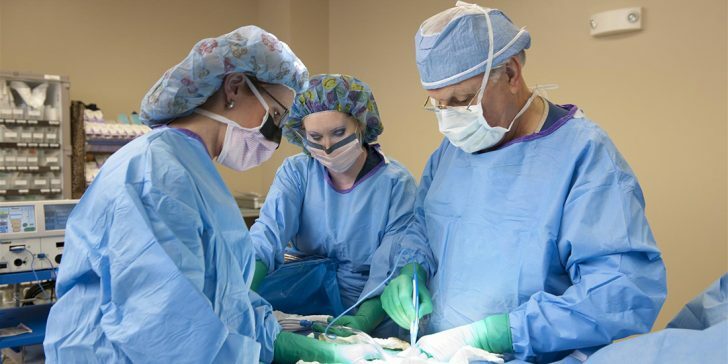
If doctors decide to have a full treatment for stomach cancer, then surgical intervention is first prescribed. It can be performed in two ways:
- Endoscopic gastrectomy.The operation is performed only after a full examination and detection of a clearly localized malignant tumor.
- Cannery operation.This is a classic method of removing not only parts of the stomach with a tumor, but also metastasized areas.
Only surgery to treat stomach cancer will not be enough - even if the disease was diagnosed at an early stage of development and the doctors found only a small fragment of damage to carcinogenic cells of the stomach.A course of chemotherapy is mandatory - this helps stop the growth of malignant cells not only in identified but also hidden foci.
Complications after chemotherapy are quite noticeable:
- hair loss;
- liver damage of a toxic nature;
- violation of hematopoiesis.
All these complications are usually reversible and disappear during the recovery period.
Preventive measures
There is no prophylaxis for gastric cancer - the mechanism of mutational processes and the transformation of healthy cells into malignant cells occurs for reasons beyond the control of people.But doctors recommend that you pay more attention to your health to those who are at risk.For example, if there are chronic inflammatory / infectious diseases of the stomach, someone in the family / genus was diagnosed with stomach cancer, previously performed gastrectomy.
Yana Tsygankova, medical reviewer, therapeutist of the highest qualification category.

